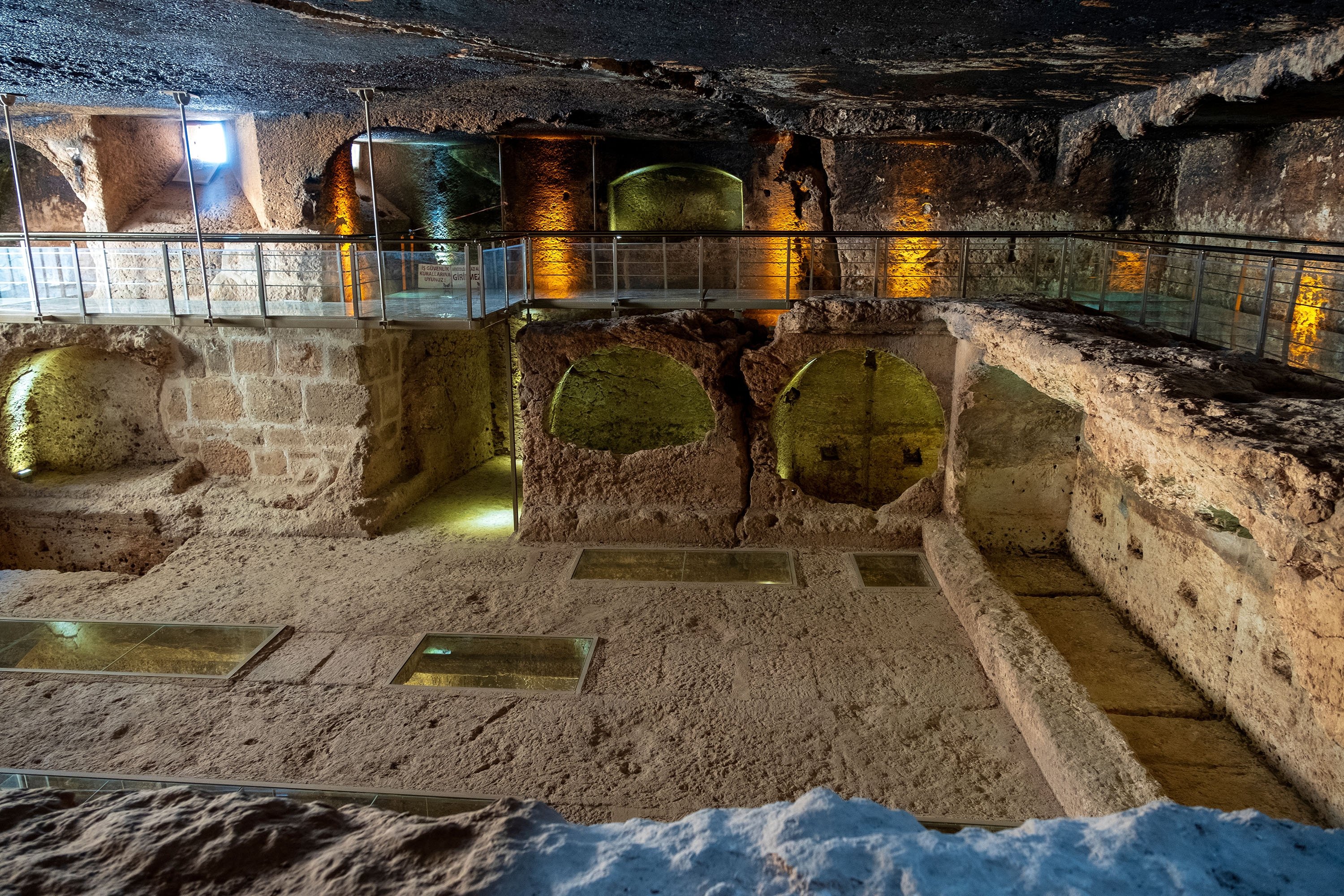© Turkuvaz Haberleşme ve Yayıncılık 2026
The archaic city of Dara, located in southeastern Mardin province, was one of the significant trade centers of Mesopotamia in ancient times. The Roman-era city offers opportunities for visitors who want to embark on a historical journey with its all glory and splendor.
Excavations and research have been carried out for 34 years in Dara's Oğuz village, which is some 30 kilometers (19 miles) from the provincial center.
The ruins of the ancient city of Dara, featuring ancient rock tombs dating back to the fifth century A.D., have been compared to the famed city of Ephesus in Aegean Turkey, earning it the nickname the Ephesus of Mesopotamia, the breadbasket of the ancient Near East.
The city, an important settlement along the famed Silk Road – which also saw great wars – for years served as the last stronghold of the Byzantine Empire in southeastern Anatolia, offering unique opportunities for those who want to go on a historical journey.
The necropolis, which literally means the city of the dead, is where religious ceremonies were held during the Roman Era and hundreds of people were buried together. Now, it is one of the most popular spots in the ancient city. "Our purpose here is to fully reveal the tourism potential of Dara, one of the most important city walls in the world,” said the Minister of Industry and Technology Mustafa Varank upon visiting the ancient ruins.
In this context, the government provided support of 4 million Turkish liras (nearly half a million dollars) through the Attraction Centers Support Program, as carried out by the Mardin Museum Directorate.
"Each region in Turkey has different richnesses within itself. Some of our regions are distinguished by their industry, some by their agricultural capacity, and others by their tourism," he added.
It is necessary to develop policies compatible with regional scale and geographies, he said, adding that Mesopotamia stands before us as a great success story.
The ancient city, founded by the Eastern Roman Empire in order to protect their border against the Sasanian Empire, is a favorite spot for tourists to take photos or newlyweds to pose for wedding or honeymoon pictures amid historical splendor.

The archaeological excavations began in the ancient city in 1986, but only some 10% of the area of an ancient village has been unearthed so far.
Over a period of 25 years, archaeological digs slowly revealed a monumental mass graveyard or necropolis.
One such cistern is located some 25 meters (82 feet) under a village house in Dara, which has drawn comparisons to Istanbul’s famed Yerebatan Cistern. The cistern, which the villagers call the "dungeon," was cleaned and unearthed over painstaking work spanning some 15 years.
